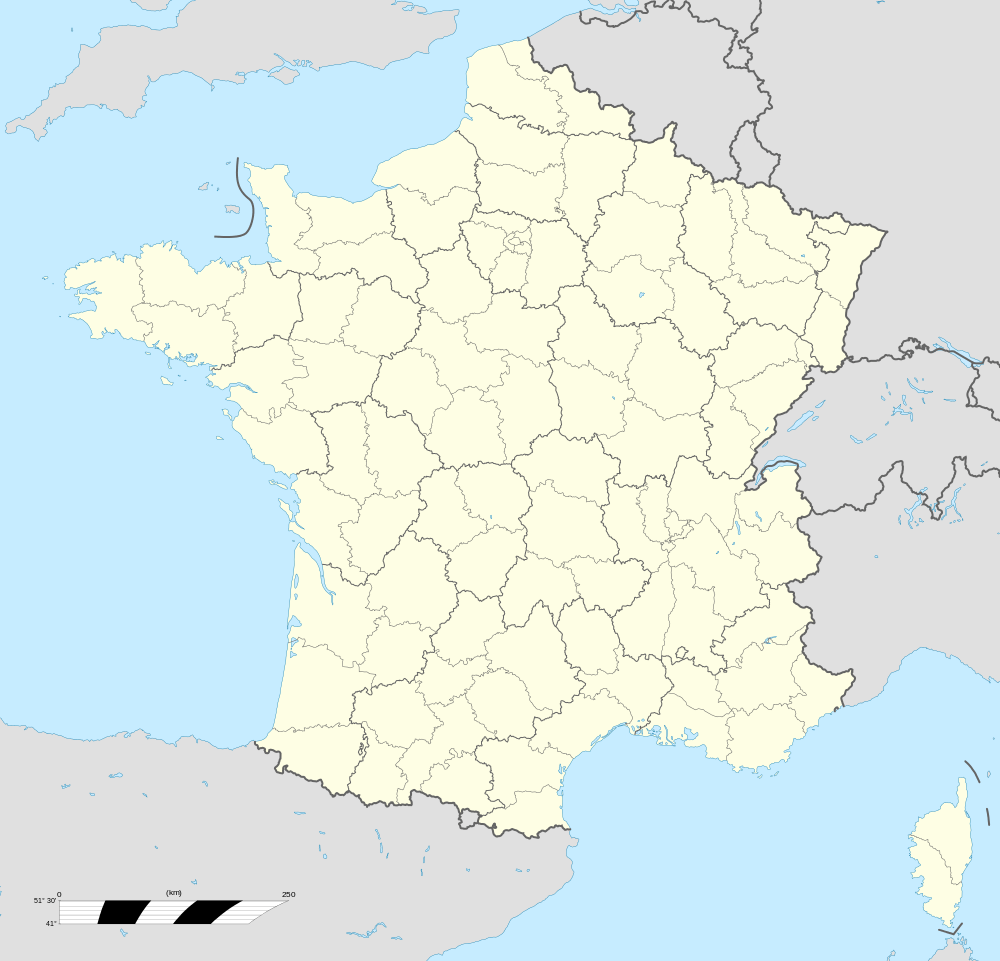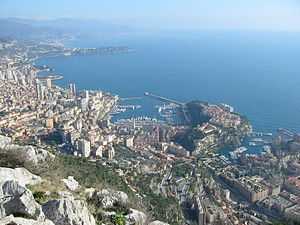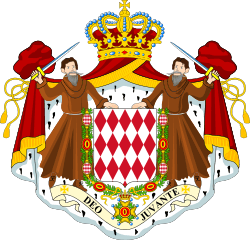Les Révoires
| Les Révoires | |
|---|---|
| Ward of Monaco | |
|
Looking from the Chemin des Révoires | |
 Location in Monaco | |
 Les Révoires Location in relation to France | |
| Coordinates: 43°43′57″N 7°24′50″E / 43.73250°N 7.41389°ECoordinates: 43°43′57″N 7°24′50″E / 43.73250°N 7.41389°E | |
| Country |
|
| Area | |
| • Total | 0.075747 km2 (0.029246 sq mi) |
| Population (2000) | |
| • Total | 2,515 |
Les Révoires is a north eastern residential and tourist area; part of the traditional Quartier of La Condamine in the Principality of Monaco.[1] It is also one of the ten modern administrative Wards of Monaco.[1]
Geography
Les Révoires lies on the north western side of the country, just north of Moneghetti.[2] Les Révoires is generally considered part of Moneghetti, even though it is its own administrative Ward. It runs directly along the neighboring French towns of Beausoleil, and Cap-d'Ail, as well as the Monégasque Wards of, La Colle, and Moneghetti.[2][3][4]
Les Révoires is known for its steep inclines, which characterize it for clear and impressive views of the Rock of Monaco and the Mediterranean. Les Révoires is also the location of the Chemin des Révoires, which is Monaco's highest point, 161 m above sea level.[5]
Demographics
Les Révoires is the smallest Ward in Monaco in terms of both population and land mass. Les Révoires has a Population of 2,545 and is 0.09 km².[6]
Monaco has ten state-operated schools, four private schools, and one university. There are no state schools and private schools located in this district.[7] There are also very few government offices located in this district, although there is a regional police station near the Les Révoires - Moneghetti border.[8]
Tourism
Les Révoires is more of residential area, but there are many chain-owned hotels, and bed & breakfasts, along the upper slopes of Mont Agel, helping Monaco's high end tourist industry.[9]
Features
Because Les Révoires is located outside the city center, its real estate sales are generally less.[10] Real estate sales average 6% to 10% less than neighboring Fontvieille or La Condamine.[11] The district contains the celebrated Jardin Exotique de Monaco (French: for Exotic Garden of Monaco), founded by Prince Albert I in 1933. The garden contains a rich collection of over a thousand succulent and cactuses. There is also a museum, called the Prehistoric Anthropology located within the Exotic Garden, which displays a variety of prehistoric remains.[12]
See also
- Geography of Monaco with suburbs and features
- Monaco
References
- ↑ 1.0 1.1 Census
- ↑ 2.0 2.1 Monaco - Geography / About Monaco / Monaco Official Site
- ↑ Districts of Monaco
- ↑ Wards of Monaco
- ↑ Chemin des Révoires
- ↑ Census 2008
- ↑ Schooling & Education in Monaco - AngloINFO Monaco (France)
- ↑ Police Stations
- ↑ Hotels
- ↑ Real Estate Monaco Les Révoires
- ↑ Real Estate Monaco
- ↑ Le Jardin Exotique
External links
| |||||||||||||||||

